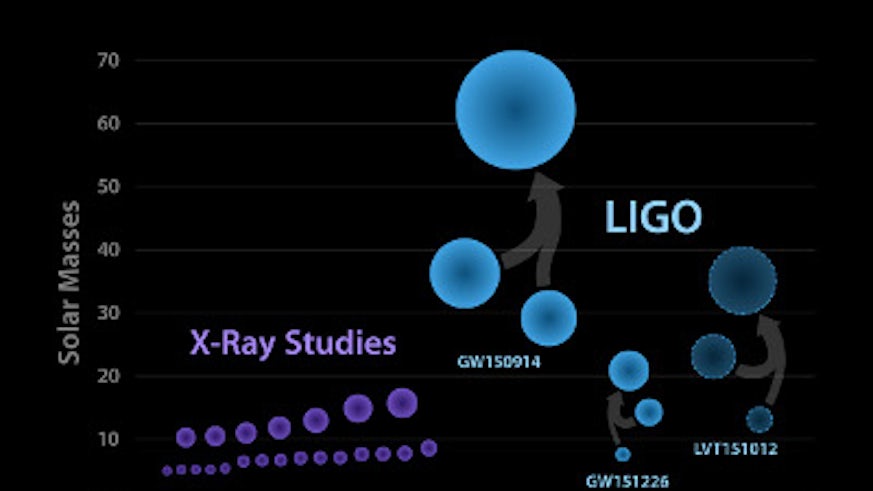Black hole signals mark 'true beginning' of gravitational wave astronomy
15 Mehefin 2016

Researchers at the School of Physics and Astronomy are hailing the "true beginning" of gravitational wave astronomy after contributing to the detection of billion year-old wave activity emitted by the merging of two black holes.
By utilising advanced algorithms jointly devised by a team of astrophysicists at Cardiff, scientists based in the United States were able to distinguish "fantastically weak" wave signals for the very first time.
The detection, announced today, 15 June, was made by the LIGO (Laser Interferometer Gravitational-Wave Observatory) Scientific Collaboration (LSC) on 26 December 2015, and has been labelled the 'Boxing Day event'.
The signal that reached Earth was so weak that it could only be extracted from the available data by way of large-scale computer simulations of black hole collisions and sophisticated analytical algorithms, both jointly developed at the School.
Early analysis shows that the black holes were much lighter than those previously observed by LIGO (one between 11 and 23 times the mass of the sun and the other between 5 and 10 solar masses) and collided in a distant galaxy to form a single, larger black hole.
One noticeable difference from the previously detected event was that at least one of the black holes was spinning, a phenomenon that has long been suspected but is very difficult to measure with telescopes.
Professor B S Sathyaprakash explained: "Compared to the first event, the gravitational wave signal we detected was fantastically weak, causing a displacement in LIGO's detectors of less than one-thousandth the size of an atomic nucleus. Using our models and algorithms we were able to tease this signal from the data to reveal the tell-tale signs of a black hole merger and infer the properties of the two individual black holes."
Dr Stephen Fairhurst, the School's Director of Postgraduate Studies and a lead writer on the result publication, said: "This event heralds the true beginning of gravitational wave astronomy and the opening of a new window on the universe."
"The different masses and observable spins that we witnessed in the Boxing Day event show that we're starting to collect vital information about the population of black holes that exist in the Universe. Future gravitational wave observations will allow us to understand how black holes form from the death of massive stars, and test whether they are really as predicted by Einstein."
First theorised in Einstein's 'Theory of General Relativity' in 1916, gravitational waves consist of tiny ripples in space-time that are produced by violent cosmic events. They carry invaluable insights into their dramatic origins, and the nature of gravity, that cannot otherwise be obtained.
Dr Patrick Sutton, head of the School of Physics and Astronomy's Gravitational Physics group, said: "In the coming years, gravitational waves will allow us to peer into the cores of exploding stars, probe the structure of neutron stars – the densest known objects in the universe – and potentially see new and unexpected phenomena that will challenge our understanding of the Universe."
Professor Bernard Schutz, also of the School of Physics and Astronomy, said: "This new detection has us popping corks again, because it proves that our belief, when we set up the British-German GEO gravitational wave collaboration more than 25 years ago, that it was worth working hard to develop this new kind of astronomy, was spot on."
"Our first detection in September last year was not a fluke: the Boxing Day event assures us that there is a lot more science to come. I hope that there will be a good few surprises as well."
The discovery came just three months after data analysed by the School provided the basis of a major breakthrough – the first ever detection of gravitational waves.